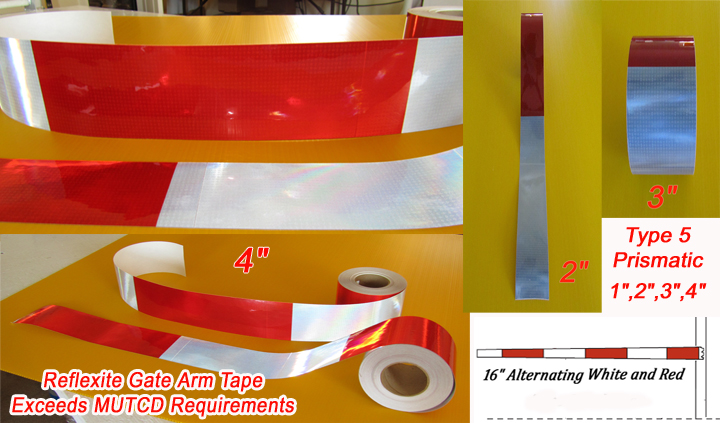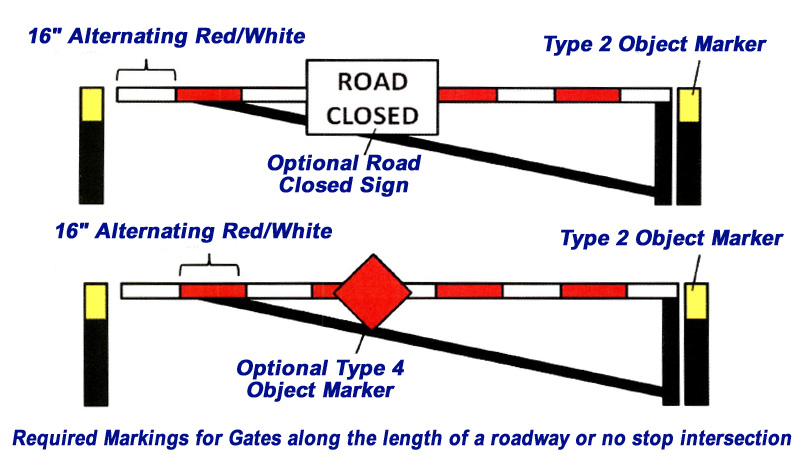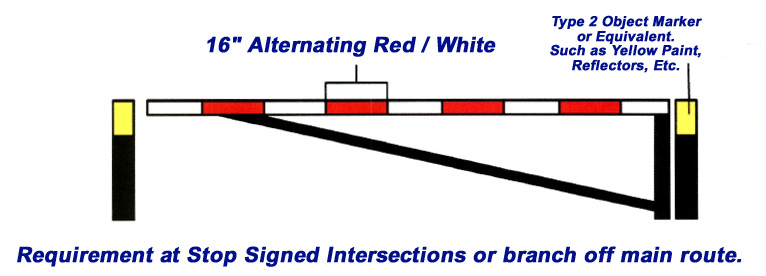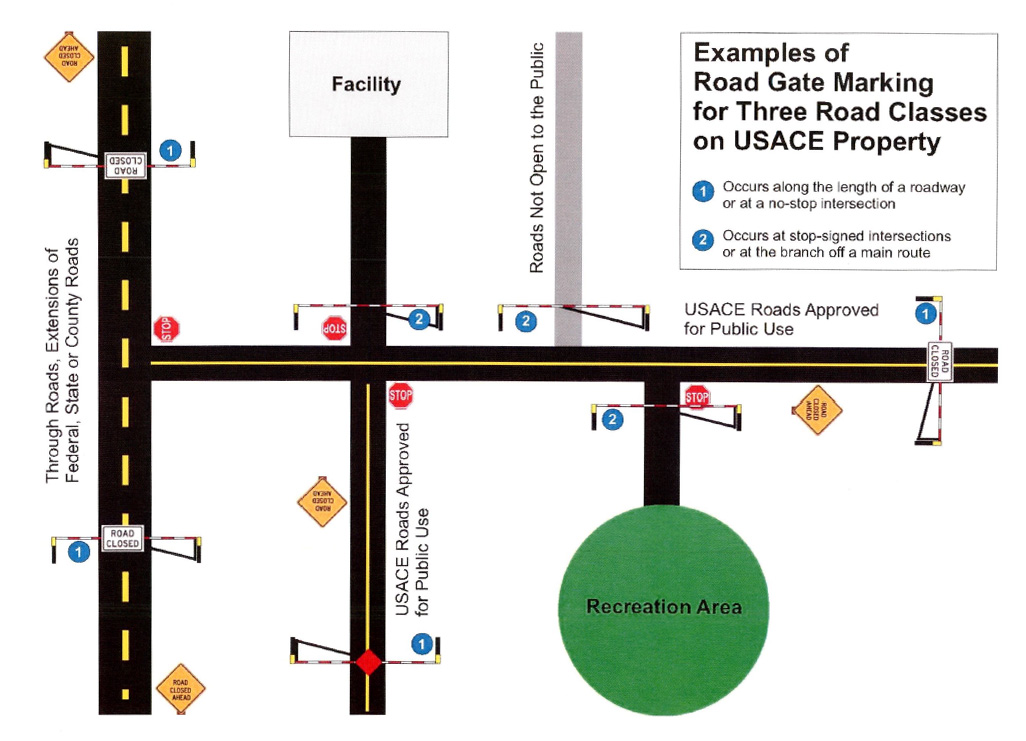Gate and Gate Arm Tape Requirements – (available here)
In 2009, the Manual for Uniform Traffic Control Devices or MUTCD guide changed the way that gates and gate arms that open onto DOT roads or run along said roads are to be marked. This change includes all gates, gate arms, draw bridge arms, toll arms and arms at railroad crossings. Prior to the 2009 change gates and gate arms were not marked in a uniform manner. For example, railroad crossing arms and draw bridge arms have generally been marked with striped and slanted red and white tape. (normally reflective) A slanting design indicates that cars are to go to either the right or the left depending on the slant of the tape. A slant like this //// means to go to the left and a slant like this \\\\ means to go to the right. The problem is that at draw bridges or train crossing you are just supposed to stop. That would be no slant like this | | | |. This may not seem like a big issue to you and I but to the government and the creators of the MUTCD guide it is. In the world of regulations, everything has to make sense and be uniform.
The tape pictured below is now used on all gates and gate arms across the country. The red and silver (white) sections are equal 16″ lengths and they do not slant. The tape is a type 5 and requirements are type 2 or better. The gate arm tape can be purchased here. Gate arms on two way roads are required to be marked on both sides. On one way roads only one side needs to be marked. For a full article which includes the MUTCD guidelines you can click here.
Gate arms on two way roads are required to be marked on both sides. On one way roads only one side needs to be marked. For a full article which includes the MUTCD guidelines you can click here.
The Corp of Engineers follow the same guidelines with the addition of two extra areas of yellow reflective tape on both sides of the gate. (see picture below) We recommend either a school bus yellow V92 material or a high intensity type 3 material for the yellow object markers on both sides of the gate.

At intersections where there is already a stop sign, no additional object markers are required on the gate. The diagram below shows the different methods of marking gates given their proximity.

Steven Cole (Economics, MBA – University of West Florida , Business & Innovation – Stanford University) 25 years of experience in the reflective safety business. Specializing in accident reduction for vehicles through increased visibility.
